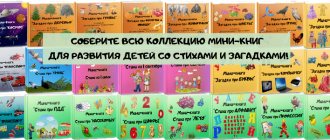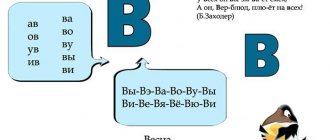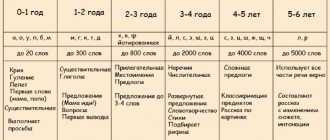Why do children’s tongues “don’t like” simple sounds?
Mostly 3-year-old children have difficulties with the sounds G (gammacism), K (kappacism) and X (chitism). Children either replace these sounds, for example, K with T, G with D, X with T, or do not pronounce them at all and skip them. This phenomenon occurs due to the structural features of the palate, the insufficiently active root of the tongue (hypotonicity), or the baby is simply too lazy to make an effort and pronounce the sound correctly.
It is extremely important to recognize and overcome diction deficiencies at an early stage, when the articulatory apparatus is still developing. In kindergarten, speech therapists deal with this problem, but parents also need to help the child overcome the speech defect. For this, there are excellent, and most importantly, effective exercises, games, and gymnastics, developed by practicing doctors “on speech.”
What I found on this issue in UchMag:
- “The most necessary games. Sounds G, G', K, K'. Games for automating the pronunciation of sounds and the development of speech of children 3-5 years old" - ideal material for correcting speech defects in a playful way;
- “Folklore material for differentiation and automation of sounds” is an excellent selection of the best examples of folk verbal creativity that will help children overcome tongue-tiedness;
- “In the world of words, letters and sounds. Speech games for the automation of sounds" - here are didactic materials for classes with children of the older group;
- “Speech therapy puzzles. Progressive technologies for teaching children” – material in the form of a program for installation on a computer;
- “A card index of tasks for automating correct pronunciation and differentiation of simple sounds of the Russian language (T-T', D-D', K-K', G-G', X-X')” is a good, interesting material for classes with children.
The history of "gekanya"
Without a doubt, the southern Russian fricative “g” is an acquired sound. This becomes obvious thanks to the achievements of such a scientific discipline as comparative historical linguistics.
The closest linguistic relatives of all Slavs (figuratively speaking, cousins) are representatives of the Baltic language family. Having once been very widespread, in historical times this community has shrunk to two peoples - Lithuanian and Latvian. In their languages, just like, for example, in the language of their more distant relatives - the Germans, there is no fricative “r”. This means that the sound entered the Slavic languages after their final separation with the Balts.
In addition, it is noteworthy that “gekanye” did not manage to spread to all dialects of the Slavs, but is characteristic of isolated groups: Russians from the south, Ukrainians, Czechs, but is never used by northerners.
This can be partly attributed to the fact that the center almost always unwittingly imposes its speech norm on the periphery. And, in fact, the language of the capital is equal to the literary norm. Approximately in this way, the Moscow form “akanya”, which appeared by philological standards almost yesterday - in the late Middle Ages, managed to displace the traditional “okanya” from the language of the Eastern Slavs. In general, the example of “okanya” is interesting because it allows us to understand which regions in the old days were on the periphery of the Moscow world and where the cultural role of the center weakened. The ancient “okaya” pronunciation has been preserved in the bearish corners of the Russian Kingdom, disappears in the southern and central regions of the country, but still reigns supreme in the languages of the Western Slavs.
Perhaps, if Rus' had been united not by Moscow, but, for example, by Bryansk, then we would have considered “gekaning” to be the norm, and would firmly pronounce this sound only somewhere in the distant villages of the Arkhangelsk region.
However, such an explanation is unsatisfactory in relation to the appearance of “gekanya”, since this phenomenon is common among peoples who have never been part of one power, therefore there could be no cultural influence of any one center. This indicates the extreme antiquity of the southern Russian fricative “g”. And the answer to the question of its origin must be sought in disciplines related to archeology.
To do this, we need to compare the following data: outline the circle of ancient cultures with which the early Slavs lived next door, and, by tracking the development of their languages, determine which of them could have introduced this sound into Russian speech.
In the textbook work of the Soviet historian V.V. Sedov’s “The Origin and Early History of the Slavs”, it was suggested that “gekanye” could have originated in the northern Black Sea region in the first centuries of our era among the bearers of the so-called Chernyakhov archaeological culture.
Conquering sounds with your child!
This means that the stages of formation of the correct pronunciation of the sounds G, K, X and their soft variants occur gradually, from simple to more complex. First you need to stage the pronunciation, this stage is called staging, only then you can start automating. And here strictly in stages: syllable, word, phrase. If the baby replaces one sound with another, then we definitely work on the differentiation of sounds.
This process can last for a whole school year, and children, as you know, quickly get bored with monotonous activities, so you need to select different games for automation and distinguishing sounds.
The production stage consists of forming the correct position of the speech organs when pronouncing a sound. There are exercises and gymnastics for this, which children learn together with a speech therapist. To perform the exercises correctly, you need to understand how sound is generated and what position of the tongue needs to be taken. I will not dwell on this issue for now. I will give an example of exercises for setting the sound [K].
"Who is stronger?" An adult and a child sit on chairs opposite each other. The child sticks out his tongue in a smile, and the adult tries to push the tongue back into his mouth with his index finger. The child’s tongue resists and bends upward, which is what is needed for correct pronunciation [K].
“Blow the ball out” An adult, with a finger or a spatula, sets the position of the child’s tongue as needed to pronounce [K]: the tongue is a slide, the tip is near the teeth, the back of the tongue rests on the soft palate. In this position, the child jerks out the air, trying to blow the cotton ball off his palm. This should produce [K].
We also breathe with our mouth open and only through our nose, check: the tongue is positioned as necessary when pronouncing [K].
We practiced, then we practice pronouncing this sound in isolation. Until we achieve the correct pronunciation of it separately from other sounds, we cannot move further. Then we automate it in syllables, words, phrases. This applies to working with any sounds; the algorithm is the same for the entire alphabet.
So that the baby does not lose the desire to practice, simply endlessly saying “k-k-k, kuk-ku-ku, ha-ha-ha, ha-ha-ha,” you need to add attributes and simple game situations.
Chernyakhov archaeological culture
The Chernyakhov archaeological culture (approximately 1st – 4th centuries AD) should be considered one of the most ancient authentically Slavic ones. The realities of life in those distant times were such that representatives of different tribes and peoples could coexist for a long time in stripes: therefore, not far from the Slavic graves you can find Scythian settlements, Gothic mounds and traces of the life of other ancient tribes.
This ethnic polyphony died out in the 4th century AD due to the devastating invasion of the Huns. The peoples sheltered by the hospitable Black Sea coast were forced to scatter in a hurry in all directions. The Slavs of the Chernyakhovsk Black Sea culture suffered a strong blow, but managed to survive, subsequently regularly uniting and contacting other ancient groups of their relatives (in particular, the Przeworsk Slavs).
Among other things, the descendants of Iranian nomads, the Scythians, were forced to leave their homes off the shores of the warm sea. They wandered around the world for a long time in search of a new homeland and eventually found a new home in the Caucasus Mountains. Having settled there, they eventually turned into the people who are known to us today as Ossetians. In our time, Ossetians are the last direct descendants of the formidable masters of the ancient steppes - the Scythians and Sarmatians. And in their language, which is a natural development of the speech of the ancient Iranian pastoralists, there are many characteristic fricative sounds.
Based on the presence of the fricative “g” among modern Ossetians, the reliable residence of their ancestors and Slavs within the same region, it can be argued that the South Russian fricative “g” is the result of the oldest Slavic-Iranian contact that occurred at the dawn of our era.
Fun activities
At the stage of automation of an isolated sound and syllable, it would be good to offer the children the following didactic games:
- The simplest educational game is “Ladder”. It's easy to make from the constructor. The bottom line is this: you can rise to the next step only if you managed to pronounce the sound correctly (any K, G, X or further along the stage syllables, words). You can “step” with your fingers, which is useful for sensory development.
- Tactile soundtrack: a didactic game that involves walking through drawn labyrinths and wandering fields with your fingers or tokens, pronouncing an isolated sound or syllable at each turn. He took a step and uttered a sound, a syllable. Then you can complicate it - you need to pronounce the word. There are a large number of options for this fun, look in stores.
- “Feed a bird, a fish, an animal”: a picture, a toy, a homemade attribute depicting any creature is used, and now it needs to be fed. But before you give the cockerel, for example, a grain, you need to clearly pronounce a sound, a syllable, a word: k-k-k, co-co-co, eat. Likewise for other sounds.
You can make it more complicated: from a number of objects or images, select only those as food whose names contain a given sound: at the beginning, middle, end.
- “Load the truck”: the principle is the same as with “feeding”. You need to put a load in the back, but first pronounce a sound, a syllable, a word.
- Games with cards are widely used: the pictures depict objects or living beings, you need to choose those whose names have a certain sound. Or we find the required image in a picture with many objects. We also connect a graphic image of a sound with an image of an object for this sound.
Another good way to train the brain is to search for and cross out unnecessary images whose names do not contain the required sound or syllable. The task of completing a detail of a picture that begins with a certain sound is well perceived by children: for a bird - beak, for a horse - hoof. This is already possible for children 5-6 years old.
- “Fishing”: a fishing rod with a metal weight, to which magnetic cards with images stick well, will allow you to diversify speech therapy classes. Task: catch the necessary cards with a fishing rod.
As methodological recommendations...
For games to be effective, it is important to use lexical material correctly, step by step. Be sure to follow the rule: do not move on to the next stage if the previous one has not been successfully completed.
When automating the sounds G, K, X and their soft variants, we use isolated sounds, direct syllables, reverse syllables. Having learned to pronounce a separate sound, the child trains to pronounce syllables: ka, ko, ku, ky, soft ones: ki, ke, kyu, kya, etc.
First, by repeated repetition of the same syllables, then by the combination: ka-ko-ku-ky. Let's move on from straight syllables to simple words: boar, horse, godfather.
Next, we complicate the tasks by giving reverse syllables for pronunciation: ak-ok-uk-yk and words with them - ak-mak, ok-tok, uk-tuk, yk-byk. Having passed this stage, it’s time to practice pronouncing syllables and words with a combination of consonants: kwa-kwo-kwu-kwy, bank, nobody, whip.
Next, we look for repeating sounds in words: cocoa, cockatoo, cube, penny. It's time to move on to phrases: first, we learn to coordinate a numeral with a noun from the material we have already covered: one kopeck, two kopecks, one kopeck, etc. We study forward and backward counting with these words: nine horses, eight cockatoos.
A more complex level: derivatives from the singular nominative case: plural (koni-koney), one-many (one stone - many stones), diminutives (key-key), moya-moya-moe-moi (my pendant, my candy).
Then we learn to divide words into syllables, select stressed and unstressed syllables, and determine the place of the sound in the word. Then pure twisters, tongue twisters, finishing sentences, transforming the irregular form of a word in a sentence are used.
In general, I conveyed the meaning of working on correcting the pronunciation of sounds. There will be more material on this topic later. I hope you find my recommendations useful. If so, share the information with your friends on social networks and subscribe to my page.
Sincerely, Tatyana Sukhikh! Till tomorrow!






